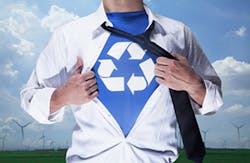Not too long ago, water reuse was considered an option. If an industrial facility wanted to save money and reduce water usage, it included a reuse treatment system for its processes. Today, reuse is rapidly becoming the norm, particularly in water scarce regions such as California.
Water that was once considered unusable wastewater is now a critical resource. However, reuse’s increasing popularity is also the result of growing discharge regulations. The desire for zero liquid discharge (ZLD) drives industries to treat and reuse their process water.
In addition, incoming water often requires treatment for hardness, corrosives and contaminants anyway. An industry reusing its own water (with known contaminants/impurities from the facility’s processes) may be preferred.
During a Dow Water Academy webinar on August 26, Felipe Pinto, regional marketing manager – Americas – Dow Chemical Company, and Kelly Lange-Haider, P.E., Dow Chemical Company’s North America technical service and development leader, discussed the benefits of ultrafiltration (UF) in water reuse applications.
Reclaim sources
Potential sources of reclaimed water are:
- Municipal wastewater facilities
- Graywater
- Industrial customers
If the on-site, treated industrial water cannot be reused at the process location, it can be used for profit by selling it to reuse/alternate-use to sources such as the following:
- Agriculture/irrigation
- Municipal wastewater facilities
- Industrial customers
Potential reuse industries
Not all industries are strong candidates for reuse. Pulp and paper, cotton textile, glass and steel manufacturers have high potential for reuse, while tanneries, pesticide facilities, rubber manufacturers and paint producers’ potential is low. According to Dow, "High-volume, dilute-concentration waters are easier to recycle and reuse than high-concentration, low-volume waters."
Treatment technologies
Treatment technologies are often used in tandem when preparing process source water or treating water for reuse. Different types treat specific contaminants. The technology of focus during the presentation is UF. UF is used to filter contaminants from less than 0.01 micrometer to 0.1 micrometer. In the case studies presented in the webinar, UF was preceded by the following treatment types:
- Case Study 1 (wastewater reclaim in an automotive application): clarifier, carbon filter and a strainer
- Case Study 2 (recycle coal to chemical industry, ZLD plant): lime softening, multimedia filter (MMF) and a strainer
- Case Study 3 (recycle textile, printing and dyeing): MMF and a strainer
In all three case studies, the desired post-treatment water quality (silt density index of equal to or less than three) was achieved.
To learn more, view the webcast here.


